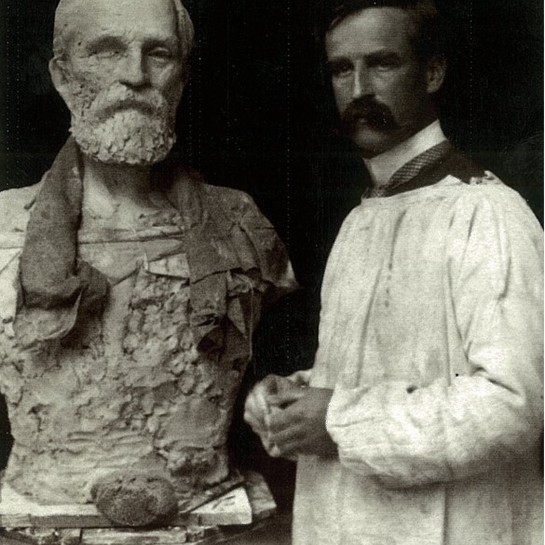Charles Kidson
Aotearoa New Zealand / British, b.1867, d.1908
Daughter Of Eve
- 1906
- Marble
- Presented by the Canterbury Society of Arts, 1932
- 293 x 276 x 197mm
- 69/563
Tags: children (people by age group), girls, hats, infants, people (agents), white (color)
Charles Kidson used his two-year-old daughter, Elsa, as the model for this work. It was one of the most admired works in the Canterbury Society of Arts’ Annual Exhibition in 1907. Kidson carved it in an academic realist style, using a range of different surface textures to convey the qualities of the young girl’s smooth skin, the bonnet and the embroidered edging on her dress. The special qualities of the white marble enabled it to be carved and smoothed to such fine detail. Born in the English Midlands, Kidson began night classes at the Birmingham School of Art while working in an engineering firm as a turner. In 1887 he gained an Art Teacher’s Certificate and the next year he emigrated to New Zealand. In 1891 he attended classes at the Canterbury College School of Art and also began teaching there as an assistant master. Kidson made, studied, and taught art for the rest of his career.
Exhibition History
Early in 1907 Charles Kidson completed this small marble head of a child. The model was his two year old daughter, Elsa Beatrice, who was born in 1905.
When exhibited at the 1907 Canterbury Society of Arts exhibition Daughter of Eve aroused some interest from the public which ended in a fight for possession of the sculpture between Mr Kennedy McDonald of Wellington and the Canterbury Society of Arts who had purchased it for their collection prior to the exhibition opening.
Charles Kidson was born in Birmingham where he attended the Birmingham School of Art. In 1886 the Kidson family emigrated to New Zealand and settled in Nelson but Charles Kidson remained on in England to complete his studies.
He eventually followed in 1888, and in 1889 was successful in gaining a teaching position at Canterbury College School of Art. Soon after his marriage in 1896 he established his home and studio on Dyers Pass Road, Cashmere. He continued to teach at the School of Art until 1903 when he returned to England to continue studies in carving and modelling.
(Label date unknown)


